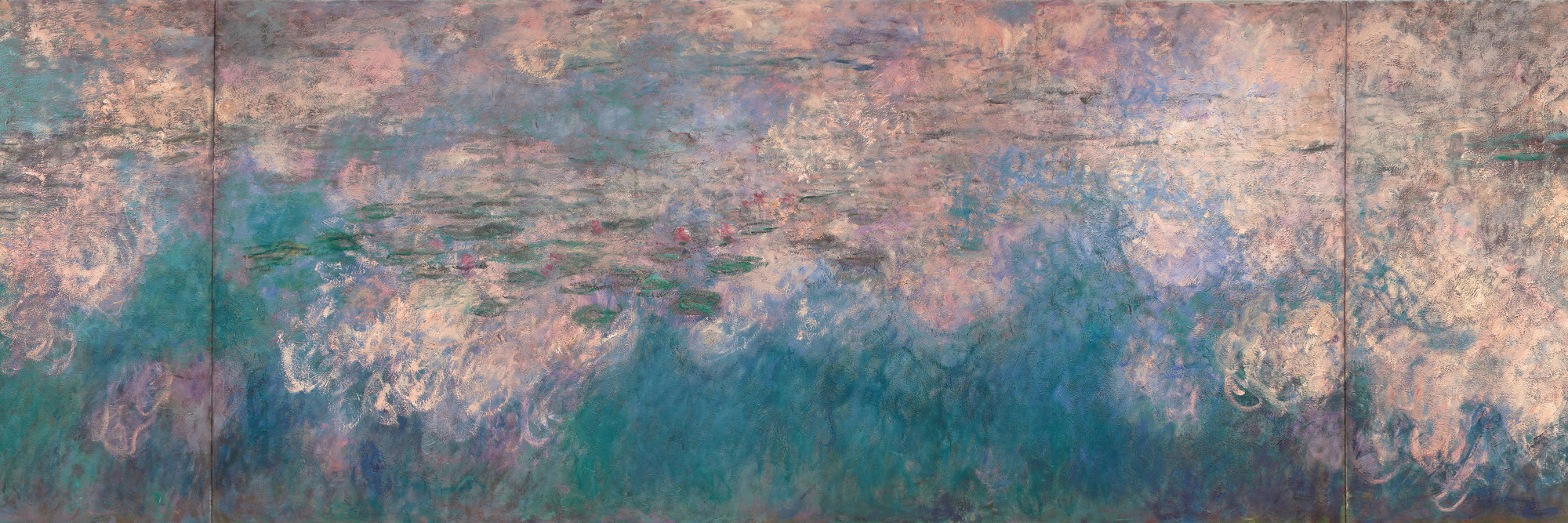
Claude Monet, a renowned painter from the 1900s, created a series of masterpieces known as ‘The Nympheas.’ These paintings, scientifically named after water lilies, are not only an exploration of color and form but also deeply rooted in dedication, history, and the artist’s personal experiences. This essay delves into the fascinating world of ‘The Nympheas,’ its origins, symbolism, composition, and its role as a bridge to a world of peace during the tumultuous times of World War I.
The term ‘Nympheas’ itself draws a connection to the water nymphs of Greek mythology, representing purity and natural beauty. Monet began working on ‘The Nympheas’ series in 1914, coinciding with the outbreak of World War I. This period was marked by personal tragedy, as his wife passed away three years earlier, causing him to temporarily stop painting. ‘The Nympheas’ marked his return to the art world. Sadly, they were also his last piece as he died in 1926 at 86 years old, when he finished the paintings.
Monet’s paintings from this series were commissioned by The Orangerie, a museum in France. The intention was to provide a sanctuary from the chaos of war, inviting visitors to escape into the tranquility of the water lilies. This was in line with Monet’s desire to create a sense of calm during turbulent times. Monet’s use of soft blues and greens for the water, combined with hints of pink and yellow in the clouds, creates a harmonious and calming atmosphere. The vivid dark green and bright pink of the water lilies stand out in stark contrast, adding a touch of vibrancy to the serene scene. The composition of the painting is dominated by the juxtaposition of pastel and natural colors, reminiscent of the feeling of a gentle spring breeze by the lake.
One distinctive aspect of ‘The Nympheas’ is the absence of man-made structures, leaving only the water lilies to disrupt the surface. This choice offers viewers an almost abstract representation of the scene, resembling a tranquil sky during sunset had there been no water lilies. Moreover, in contrast to Monet’s earlier works, this painting uses a bigger expanse of negative space. While there are small patches of water lilies, the rest of the painting is filled by the sky. Monet himself described this painting as a bridge connecting ground, water, and sky. The lilies represent the presence of ground and water, while the reflection represents the sky. Another interesting stylistic choice is the way he painted the water. During his last few years, he suffered from a cataract that slowly took away his sight. The way he painted the light in the water is representative of how he saw it then, like little circles of light rather than clear clouds due to his decreasing eyesight, making it almost abstract.
Monet’s primary goal in creating ‘The Nympheas’ was to invoke feelings of calm and peace, qualities often scarce during times of war. He wanted viewers to experience the serenity he found in his beloved water lilies. In addition, In his own words, he confessed to feeling ashamed of dedicating himself to art while so many suffered in the war. This was his way of contributing to the war effort.
Viewing ‘The Nympheas’ in a museum offers an immersive experience where the size and scale of the paintings envelop the viewer. This amplifies the sense of tranquility and peace that Monet aimed to convey, making the painting even more poignant when seen in person.
The Nympheas is not just a collection of paintings but a testament to the power of art in times of turmoil. Through a careful selection of colors, composition, and symbolism, Monet’s masterpiece offers a bridge to a world of peace, inviting viewers to escape the chaos and find solace in the timeless beauty of water lilies. It is a lasting tribute to both the artist’s personal journey and the collective aspiration for peace during the harrowing times of World War I.